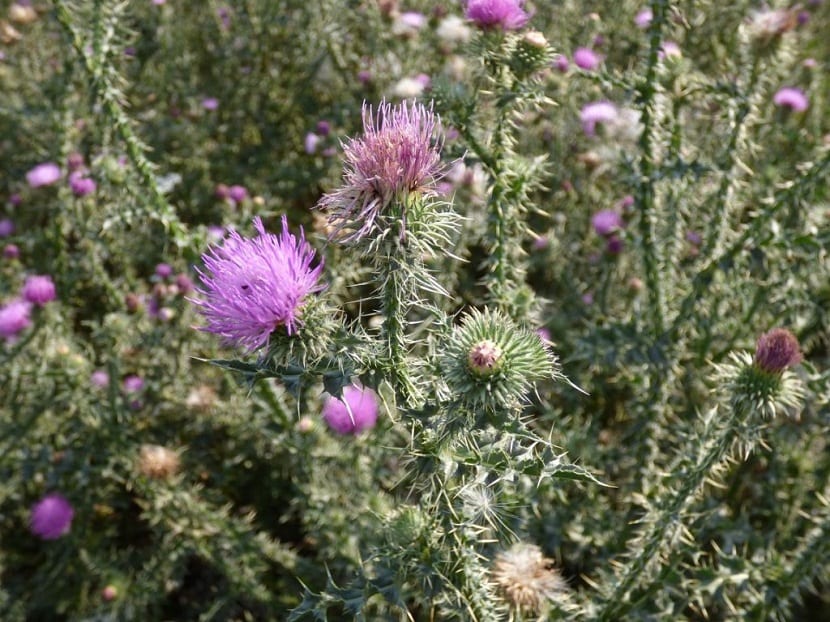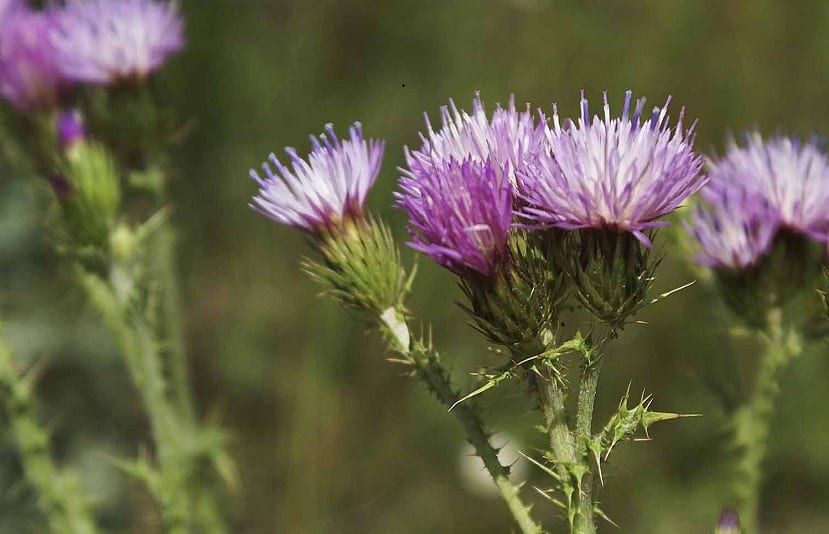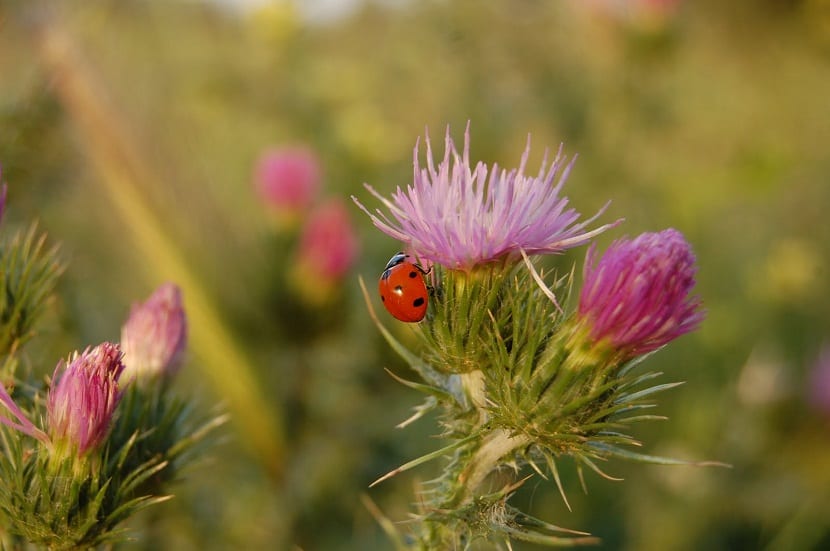
El Thistle or Carduus burgeanus is among the most common plants and wild that can be found on the roadsides. Its humble origin does not exempt it from having a particular beauty and resistance. Like many other plants they have been used at certain times by popular herbalism, however, it is currently an unusual practice.
This plant is present in different fields and even in those that do not seem conducive for plant life to flourish. Its characteristic thorns protect it effectively, so they accompany the landscape for long periods of time.
Mediterranean origin of Carduus bourgeanus

This Thistle species It is a herbaceous plant of the Asteraceae family whose generic name is Carduus. There are a large number of species and subspecies but only about 200 have been cataloged, among which are the Carduus bourgeanus. Name Carduus burgeanus has its roots in Latin and Greek and whose meaning is a word similar to tip, prick or sting. There is a possibility that the spines are being referred to. On the other hand, the epithet bourgeanus was assigned in honor of Eugene bourgeau recognized botanist scholar of the species.
The genus has its origins in the Mediterranean wildlife of Africa, Asia, and Europe. Its introduction in America and Australia has been counterproductive, since it has spread rapidly and deleteriously to the other local species. Among the most popular names by which this species is known are: thistle, cardillo, donkey thistle, black thistle, among others.
General characteristics
This flora characteristic of arid areas of the Iberian Peninsula is an annual herb with branched upper stems. The leaves are basal, webbed and lance-shaped with spines reaching almost to the chapters. The flowers are tubular, placed alone on stormy and short peduncles and usually appear from the beginning of March. These flowers also present flosculous with stamens.
The bracts are lanceolate like the leaves, in addition, they have a purple terminal spine. The fruit is present in glabrous achene with cylindrical prominence and deciduous vilano with certain hairs at the base. Its many thorns protect the plant from herbivorous predators that only consume it in extreme cases or goats that choose this food when they have exhausted other resources. It is not a demanding plant, it is very resistant and can reproduce and grow in shallow soils.
Cultivation and care

Cultivating the Thistle does not represent a very complicated task, especially, in the Mediterranean or temperate areas where it originates. The favorable conditions are those with abundant sun and semi-shadow. They are not particularly tolerant of cold climates or frost. Although they grow in all types of terrain, the healthiest thing is that they are well drained with humus and have a certain depth. It is also important to remove the soil to leave it in optimal condition so that the root grows favorably.
When the seed is sown during the winter, like other species, it must be done in seedbeds arranged in warm places. They are transplanted to the selected field three to four months later. If the seeds are to be spread directly on the ground, the ideal is to do it during the spring season.
Care and pests
Although it is a very hardy plant while young, it does not withstand frost and the soil must be kept moist during the summer. It is very important to avoid poorly drained soil, to prevent root rot. It is pruned by removing the dry leaves whenever necessary. Although its spines protect it from herbivores, this does not happen with some pests and fungi against which it has no defense. Among the most common pest that thistle presents is the black donut. This is caused by a caterpillar that feeds on the most tender leaves.
Aphids are annoying for this species, although it must be said that there are natural remedies to eliminate these insects. They are presented as small green, brown, black and yellow insects that feed on sage. They have the appearance of sticky spots and invade the entire plant. Downy mildew is a fungus that affects everything from leaves to flowers. The ideal is to control it with organic pesticides.